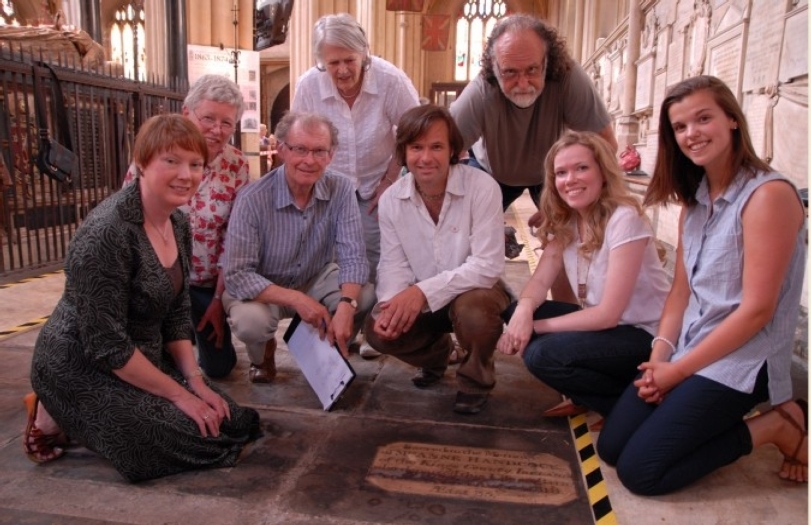CCT helps Bath Abbey record historic ledger stones
The Churches Conservation Trust and Bath Abbey have joined forces with local volunteers to record over 100 historic ledger stones, ahead of a long-term project to repair, renew and transform the Abbey's collapsing floor.
Trial excavations in 2011 and 2012 revealed that time and regular use had weakened the Abbey floor, creating large voids, some of which extend under the structure of the building.
Abbey staff devised a transformative project to save the floor and called in the Churches Conservation Trust (CCT), the national charity protecting historic churches at risk, for its help and expertise.
The first stage of the resulting Footprint Project will see a small section of Bath Abbey’s floor lifted and repaired for the first time in over 100 years.
New under floor heating will also be installed under this section of the floor to trial the process which will eventually take place under the whole of the Abbey floor. To kick-start the project over 30 volunteers from the Abbey community and the local branch of NADFAS (the National Association of Decorative & Fine Arts Societies) last week made detailed recordings of the site’s ledger stones, which make up a large part of the Abbey floor.
Now that these have been successfully recorded, the ledger stones have been carefully removed and are being stored securely until the floor trial is completed.
Dr Neil Rushton, Conservation Project Manager at CCT, who trained the volunteers and is leading the ledger stone recordings, explained: “Ledger stones are decorated flat stones placed in sites of worship as memorials to former parishioners. Many of these ancient stones have lain hidden under the Abbey’s 19th century pews for 140 years and until now they have never been fully recorded.
“I had the pleasure of sharing established recording technology and techniques with the Abbey’s volunteers so that the stones’ positions, condition and inscriptions could be carefully documented. This will give us important insight into the local communities that lived and worked around the Abbey through the ages and ensure the information contained in the artefacts is saved, understood and appreciated.”
Lucy Rutherford, archivist at Bath Abbey, continued: “The Abbey’s pews were temporarily removed and we had three days to record the revealed ledger stones. The stones will now be carefully lifted and stored securely for the duration of the project, which will see a trial area of 50 square metres of floor raised, the voids beneath the floor carefully filled, under floor heating installed and a stone floor re-laid.
“There are some fascinating stories to be told about the people who lived and worked within the parish, as well as the many visitors who came to Bath to use the spa waters in the 18th and 19th centuries. The stories contained in the Abbey’s ledger stones will be used as part of the interpretation plans for the Footprint project.”

